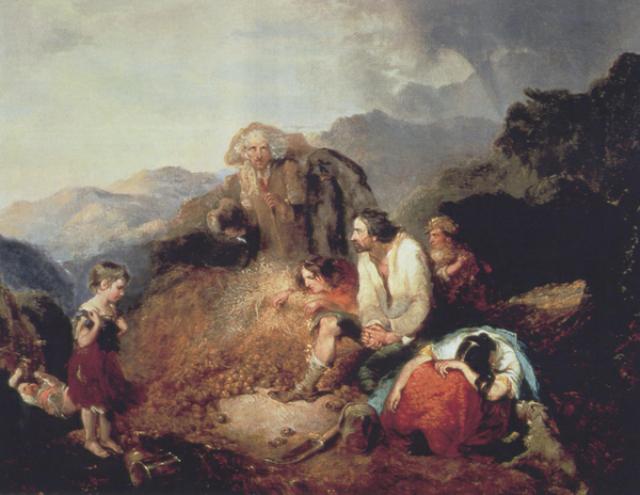| On Monday, 13th of February I had the honour of saying a few words at the AGM of the Great Irish Famine Commemoration Committee (GIFCC). The Committee was established in February 1996 in response to a speech given by the President of Ireland, Mary Robinson, inspiring her audience not to forget the struggles of those who came before them, and in particular to commemorate the struggle for survival by people in Ireland at the time of the Great Famine 1845-1848) when one and a half million people died or emigrated.
The Committee has since broadened its objectives, aiming to inspire awareness and thought about famine, displacement and immigration faced by any segment of humanity, and awareness of the help needed by people throughout the world suffering from this ordeal today. GIFFC raised funds for the construction of the striking monument at the southern wall of the Hyde Park Barracks enclosure, near Queens Square, at the northern end of Hyde Park, on the Macquarie Street side. The monument was unveiled on the 28th August, 1999.
At the meeting, after giving a brief account of Kosciuszko Heritage Incorporated, its organisation and activities, I put the focus on Sir Paul Edmund Strzelecki. In the broader community, Strzelecki is known as an explorer of Australia with many people identifying him eponymously, the Strzelecki Track being a common example. Strzelecki of course was much more than an explorer of Australia. Amongst other things, he was a scientist, geologist and author with many first to his name. KHI has celebrated these accomplishments at the various Kozzie Festivals since 2007. However, I stated to the Committee present, that at the 2012 Festival it will be Strzelecki’s humanitarianism that will be celebrated, and this is where KHI has a common interest with GIFCC.

"Discovery of Potato Blight" by Daniel McDonald, circa 1852 |
It took the members by surprise when I stated that Sir Paul received his knighthood for his humanitarian work in Ireland from the beginning of January, 1847 to the latter part of 1848. Strzelecki was widely acclaimed at the time in England and Ireland for his relief work. The acclaim reached such a crescendo, that only a short time after he left Dublin, he was knighted by Queen Victoria on November 21st, 1848.
I explained that the reason why people had become so affected was due to the positive effects from Strzelecki turning conventional wisdom upside down. Before Strzelecki’s inspiration, it was thought that the best way of helping destitute families was to provide relief to the parents and by doing so, it was taken for granted, the parents would then provide for their children. Strzelecki changed the focus from the parents to the children! The effect was startling. Confident that the children would be clothed and fed over the long term in local schools, the parents were better able to alleviate their own circumstances. Those witnessing the actuality of this method of relief praised the author of the scheme. Strzelecki quickly became famous.
Somehow, in the 21st Century, knowledge of Sir Paul’s humanitarianism has been lost. The Committee empathised and will provide information about Strzelecki on their website. The web address of the Great Irish Famine Commemoration Committee is:
www.irishfaminememorial.org/
GIFCC will be involved in hosting the annual International Commemoration of the Great Irish Famine in Sydney in 2013.
Felix Molski
| 

